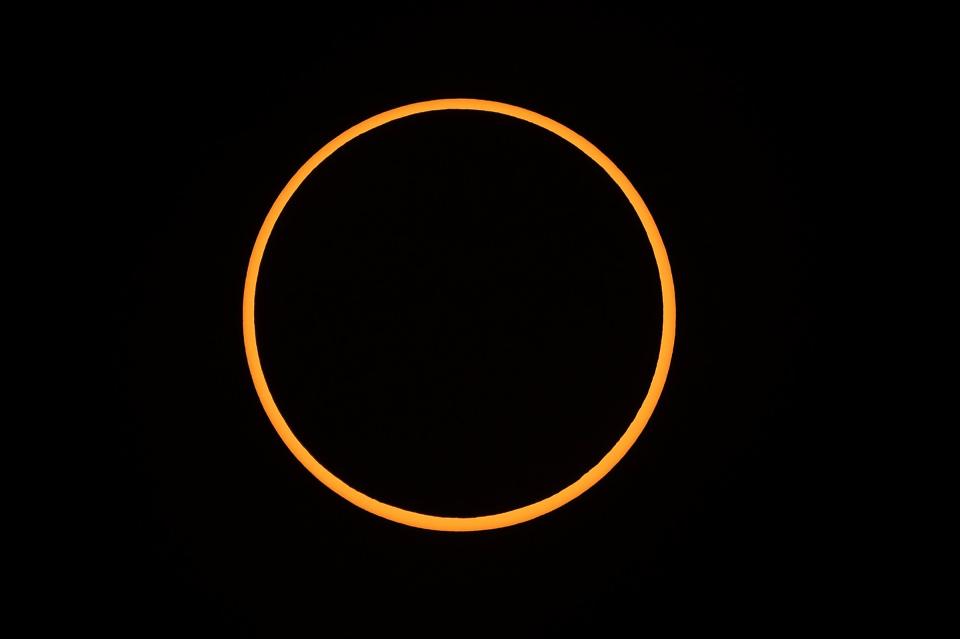On Wednesday, a rare annular solar eclipse will occur, creating a “ring of fire” effect in the sky. This phenomenon will be most visible from South America, with residents of Hawaii also having a chance to witness it. The eclipse happens when the moon is at its farthest point from the sun, creating an illusion of a thin ring of sunlight around the moon. The event will take place in phases, starting with a partial eclipse, followed by the annular eclipse, and then the maximum eclipse before ending with a partial eclipse.
The annular solar eclipse is scheduled to take place on Wednesday, October 2nd. The event will begin with a partial eclipse at 15:42 UTC, followed by the annular eclipse at 16:50 UTC, reaching maximum eclipse at 18:45 UTC, and concluding with the end of the annular eclipse at 20:39 UTC. The partial eclipse will end at 21:47 UTC. This rare astronomical event will only be viewable by a small portion of the population, with Hawaii being the only state in the U.S. expected to have a partial view of the eclipse.
The solar eclipse will be visible from parts of South America, the Pacific Ocean, the Atlantic Ocean, and Antarctica. While only about 175,000 people live within the path of annularity, around 245 million people could have a partial sightline of the eclipse. Southern parts of Argentina and Chile will have the best view of the annular eclipse, with Hawaii being the only state in the U.S. expected to see a partial eclipse. Other territories and countries that may see a partial eclipse include American Samoa, Antarctica, Brazil, Mexico, New Zealand, and more.
In order to safely view the “ring of fire” annular eclipse, proper eye protection is necessary. Solar viewing glasses, also known as eclipse glasses, should be worn throughout the entirety of the eclipse to protect eyes from harmful rays. If you do not have eclipse glasses, you can make a do-it-yourself indirect viewer such as a pinhole projector or funnel viewer. Regular sunglasses, binoculars, and cellphone cameras do not provide sufficient protection for viewing an eclipse. It is recommended to use safe solar viewers that comply with ISO 12312-2 standards.
For those in Hawaii, a partial eclipse will be visible starting around 6:10 a.m. Hawaii Standard Time (HST) and ending at 7:57 a.m. HST. Several cities across Hawaii, including Hilo, Honolulu, Kailua-Kona, Lihue, Napili-Honokowai, Wailuku, and Waipahu, will have the opportunity to view some of the partial eclipse. The ring of fire annular eclipse in 2024 will not be visible from the contiguous U.S., making this a unique opportunity for those in Hawaii to witness this rare celestial event.








